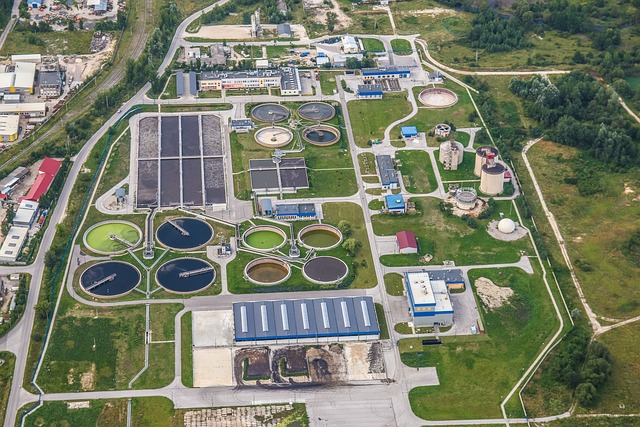Regenerative medicine is a rapidly advancing field focused on repairing and regenerating damaged tissues through innovative treatments that go beyond traditional surgery. These therapies aim to improve healing outcomes by harnessing the body's natural restorative abilities, using stem cells, biomaterial scaffolds, growth factors, and targeted signaling modulation. Advanced techniques like 3D biopolymer scaffolding and tissue engineering provide a supportive environment for cellular growth and differentiation, while personalized treatments with PRP and other growth factors mimic natural wound healing processes. The integration of these cutting-edge strategies with traditional medicine forms a multidisciplinary approach to enhance the efficacy of tissue repair, reduce scarring, and expedite recovery times. The ultimate goal is to address the variability in healing outcomes, thereby improving patient recovery and reducing the prevalence of chronic wounds across various clinical settings. These treatments offer a transformative shift in healing practices, with the potential to prevent or slow degenerative diseases by stimulating cellular regeneration, ultimately aiming to delay age-related decline and alleviate conditions like diabetes and heart disease. The ongoing advancements in this field are promising, with a focus on ensuring these treatments are safe, effective, and widely accessible.
In recent years, the field of regenerative therapies has emerged as a beacon of hope in the realm of tissue repair and restoration. This article delves into the transformative strategies now available to augment healing processes, challenging traditional treatment paradigms in medicine. From stem cell therapy leveraging the body’s innate capacity for renewal to advanced biological scaffolding techniques that pave the way for tissue engineering, we explore how these innovations are reshaping the landscape of healthcare. Furthermore, the critical roles of growth factors and cytokines in expediting tissue recovery are examined, offering insights into their potential to revolutionize treatment outcomes. Join us as we navigate the cutting-edge advancements that promise to bridge the gap between injury and regeneration.
- Overview of Tissue Repair and Its Challenges in Modern Medicine
- Regenerative Therapies: A Revolutionary Approach to Healing
- Stem Cell Therapy: Harnessing Natural Healing Potential for Tissue Regeneration
- Biological Scaffolding and Tissue Engineering Advances in Treatment
- The Role of Growth Factors and Cytokines in Accelerating Tissue Repair Processes
Overview of Tissue Repair and Its Challenges in Modern Medicine

Tissue repair is a critical function of the body, orchestrated by a complex interplay between inflammation, proliferation, and remodeling processes. When tissues are damaged due to injury, disease, or aging, the body initiates a cascade of events aimed at restoring function and integrity. However, challenges in modern medicine arise from the varying degrees of success in tissue repair, which can be influenced by factors such as the patient’s age, comorbidities, and the specific tissue involved. In some cases, the repair process is incomplete, leading to scarring or impaired function. This has prompted the exploration of advanced regenerative therapies to enhance the body’s natural healing capabilities, integrating innovative treatments that range from cell-based approaches to biomaterial scaffolds and molecular signaling modulators. The field of regenerative medicine is at the forefront of addressing these challenges, offering potential solutions through a multidisciplinary approach that combines traditional medicine with cutting-edge technology and science. These therapies hold promise for restoring tissue function more effectively, reducing the burden of chronic wounds, and improving patient outcomes across various clinical settings.
Regenerative Therapies: A Revolutionary Approach to Healing

Regenerative therapies represent a paradigm shift in the realm of healing, offering novel and effective approaches to tissue repair that transcend traditional medicine. These therapies harness the body’s innate restorative capabilities, leveraging advanced techniques such as stem cell technology and tissue engineering to promote natural healing without the need for extensive surgeries. The potential of these treatments lies in their ability to restore function and form to damaged tissues, often with less scarring and a quicker recovery time compared to conventional methods. Stem cells, in particular, have shown remarkable promise in regenerating various types of tissues, from skin to cartilage, providing a tailored solution to the patient’s unique needs. The integration of these therapies into clinical practice is not only revolutionizing treatment protocols but also offering hope for those suffering from chronic conditions or acute injuries where previous options were limited.
Furthermore, the application of regenerative medicine extends beyond the confines of surgical repair; it is paving the way for treatments that can prevent or slow down degenerative diseases. By stimulating cellular regeneration and repair mechanisms, these therapies aim to restore the body’s balance, potentially delaying the onset of age-related deterioration or mitigating the effects of diseases such as diabetes or cardiovascular ailments. The field continues to evolve, with researchers and clinicians collaborating to refine these treatments, ensuring they are safe, effective, and accessible to those who can benefit from them, thereby heralding a new era in medical science and patient care.
Stem Cell Therapy: Harnessing Natural Healing Potential for Tissue Regeneration

Stem cell therapy represents a revolutionary frontier in medicine, offering a potent approach to enhance tissue repair. This form of treatment harnesses the natural healing potential of stem cells, which are capable of differentiating into various cell types, thus facilitating the regeneration of damaged tissues. The therapeutic application of stem cells is underpinned by their remarkable ability to replace lost or damaged cells with newly formed ones, effectively restoring tissue functionality and structure. Advancements in this field have led to the development of personalized treatments that cater to individual patient needs, making strides in the treatment of conditions such as degenerative diseases, spinal cord injuries, and diabetic ulcers.
The process of stem cell therapy is meticulously orchestrated within a controlled laboratory environment prior to administration. Here, the stem cells are isolated from a variety of sources including bone marrow, adipose tissue, and umbilical cord blood, before being cultured and directed towards becoming specific cell types that align with the patient’s healing requirements. The endogenous nature of this treatment minimizes the risk of immune rejection, making it a promising alternative to traditional surgical interventions. As such, stem cell therapy stands at the forefront of regenerative medicine, offering hope for those seeking effective and innovative treatments for tissue repair.
Biological Scaffolding and Tissue Engineering Advances in Treatment

In the field of regenerative medicine, biological scaffolding plays a pivotal role in enhancing tissue repair. These scaffolds are meticulously designed to mimic the natural extracellular matrix, providing a supportive framework for cellular growth and differentiation. They are often composed of natural polymers like collagen and fibrin, which are biocompatible and biodegradable, ensuring that they do not hinder the body’s healing process but rather augment it. The integration of stem cells with these scaffolds has been a particular area of advancement, allowing for the regeneration of tissues with greater precision and efficacy than ever before. This combination acts as a template for new tissue formation, guiding cells to the site of injury where they can differentiate into functional tissue, thereby restoring the integrity and function of the damaged area.
Advances in tissue engineering have further propelled the realm of regenerative therapies, offering novel solutions that transcend traditional medicine. The utilization of bioactive molecules within these scaffolds promotes cell attachment, proliferation, and the secretion of extracellular matrix components, leading to improved tissue repair outcomes. The development of three-dimensional printing technology has enabled the fabrication of patient-specific scaffolds with complex geometries, enhancing the treatment’s accuracy and effectiveness. These personalized scaffolds are tailored to fit the unique contours and dimensions of the injured tissue, ensuring a more intimate and efficient integration with the host tissue. Consequently, the potential for restoring function and appearance following injury or disease is greatly amplified through these innovative treatment modalities.
The Role of Growth Factors and Cytokines in Accelerating Tissue Repair Processes

Growth factors and cytokines are pivotal elements in the realm of regenerative medicine, playing an integral role in accelerating tissue repair processes. These signaling proteins, when administered as part of a treatment regimen, can stimulate cell proliferation, differentiation, and extracellular matrix production, thereby facilitating the restoration of damaged tissues. For instance, therapies leveraging platelet-rich plasma (PRP) harness the body’s own growth factors to promote healing in tendons, ligaments, and bones, showcasing the potential of personalized medicine in this domain.
Advancements in the field have led to the development of targeted treatments that exploit the unique properties of these signaling molecules to enhance tissue repair. By precisely controlling the delivery of growth factors and cytokines, researchers aim to mimic the body’s natural wound-healing mechanisms, resulting in more effective and efficient treatment outcomes. This tailored approach is not only more responsive to individual patient needs but also has the potential to reduce the overall recovery time and improve the quality of repair, making it a promising avenue for future medical treatments.
Regenerative therapies stand at the forefront of medical innovation, offering promising avenues for enhancing tissue repair. By integrating stem cell therapy, biological scaffolding, and leveraging the power of growth factors and cytokines, these treatments hold the potential to significantly improve patient outcomes in medicine. The strides made in tissue engineering are particularly noteworthy, providing a robust foundation for the future of healing. As research continues to advance, the synergy between these therapies promises to overcome many of the traditional challenges faced in tissue repair, heralding a new era in the field of regenerative medicine.
